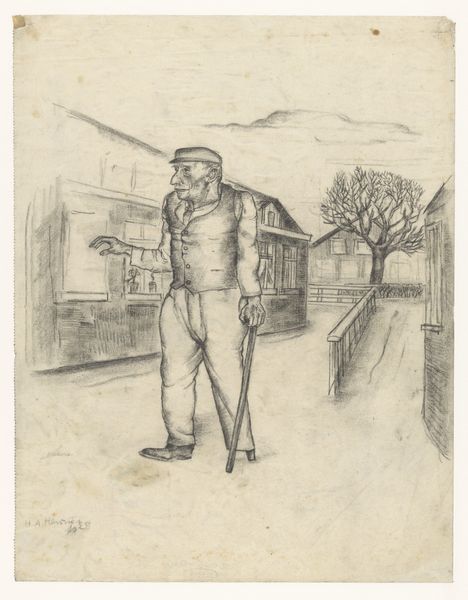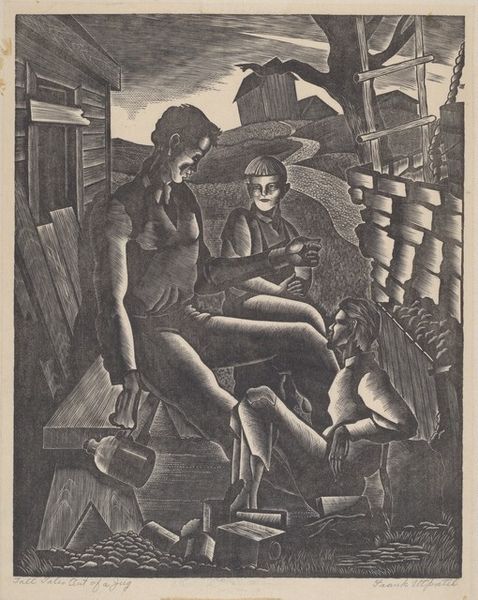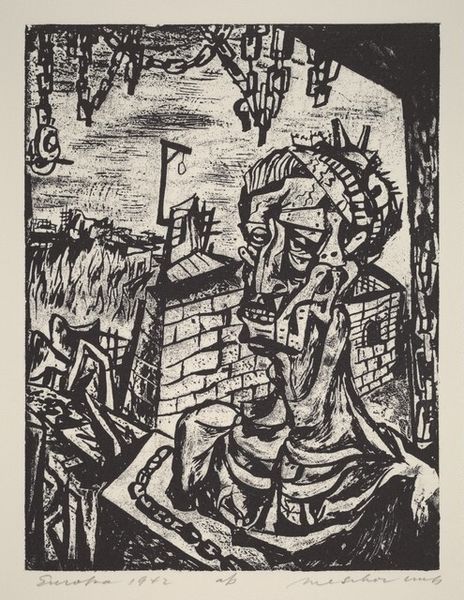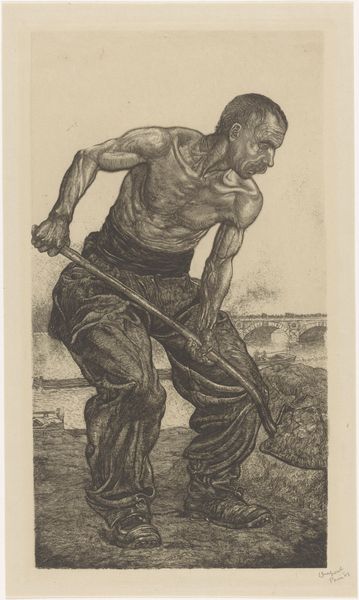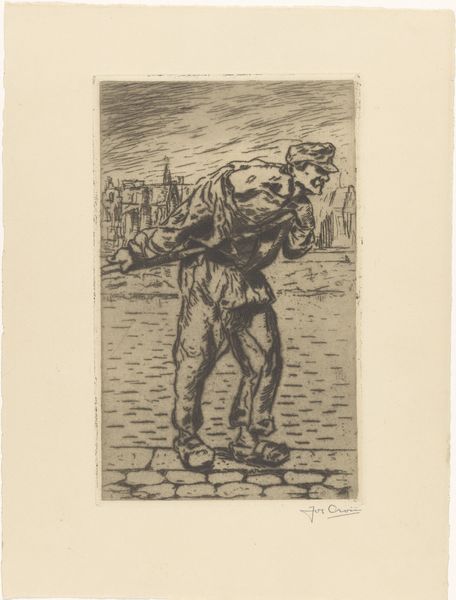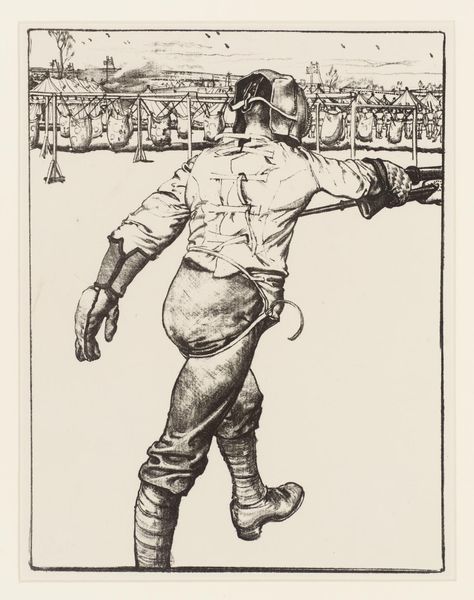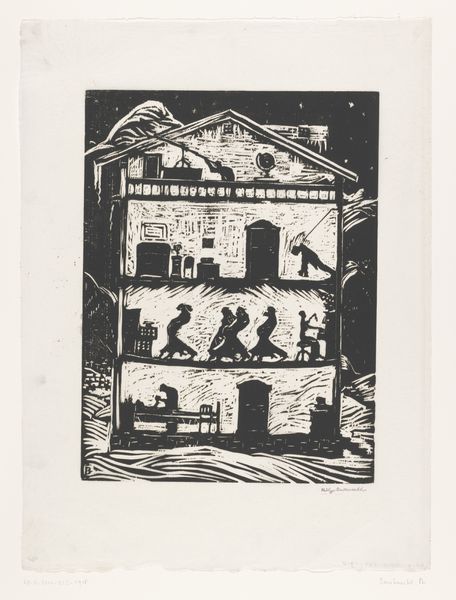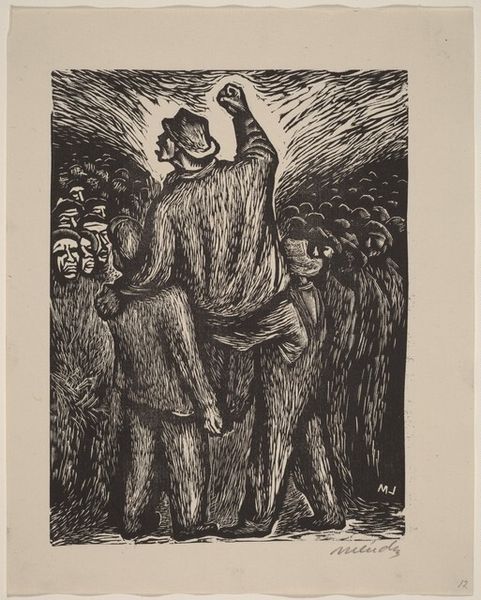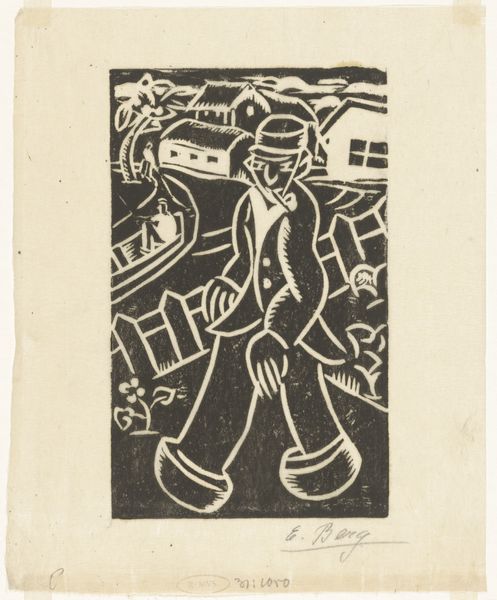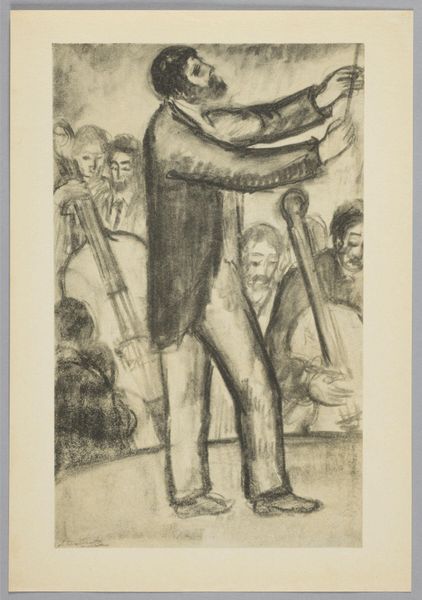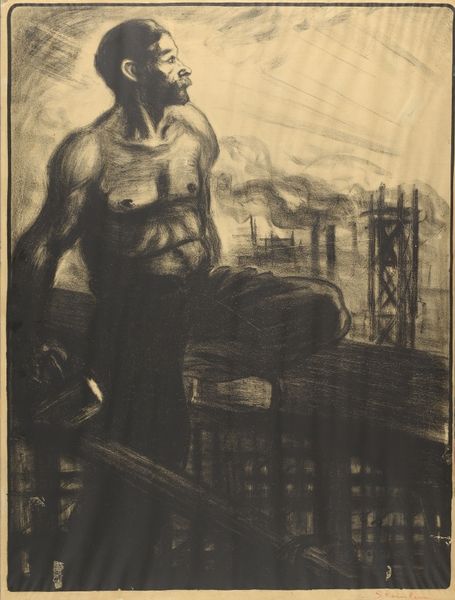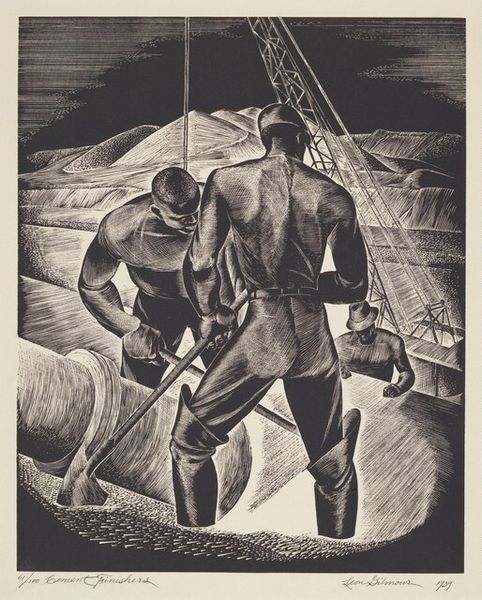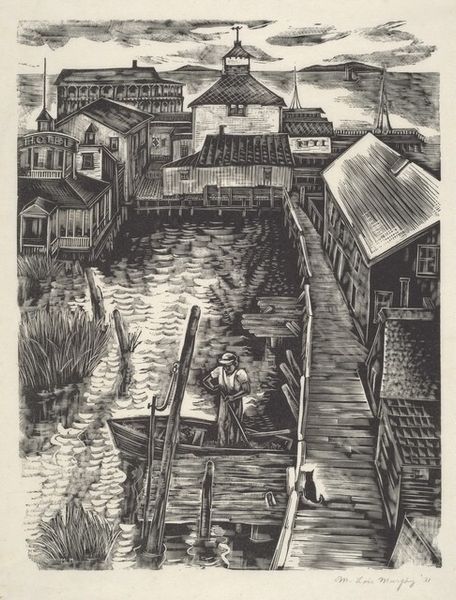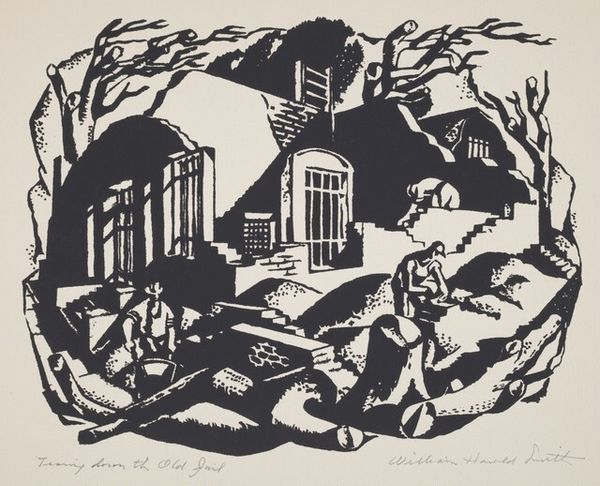
drawing, pencil
#
portrait
#
pencil drawn
#
drawing
#
pencil sketch
#
pencil drawing
#
pen-ink sketch
#
pencil
#
cityscape
#
portrait drawing
#
realism
Dimensions: height 356 mm, width 283 mm
Copyright: Rijks Museum: Open Domain
Curator: Looking at this pencil drawing from 1930, I'm struck by the quiet loneliness it evokes. Editor: You’ve pinpointed the emotion perfectly. The work is titled “Man with Wooden Leg and Walking Stick” by Henk Henriët, housed here at the Rijksmuseum. Notice how Henriët has composed the work, setting the figure within a cityscape—a sort of architectural envelope. What structural elements draw your attention? Curator: The rendering of the clouds, for one. They create a sort of hovering lid. But look also at the directional hatching. Notice how Henriët uses different angles to articulate the surfaces, especially the figure's clothing. The play of light and shadow, achieved with such simple means, lends considerable weight and form. Editor: The figure's placement in the composition appears intentional, does it not? It reflects broader attitudes concerning social marginalization during this era, doesn't it? Curator: Yes, placing the subject within an architectural context also raises questions about the individual’s place within the larger social structures. This visual strategy has been around since at least the Renaissance. In the High Renaissance it’s celebratory of humanistic individualism, yet by the 1930s—a time marked by widespread societal instability—that framework yields this depiction, tinged by what can be called a poignant melancholy. Editor: You mention social instability. How might the work function as social commentary or representation of a certain socio-economic stratum? Curator: His visible disability, the rather austere clothing, the setting itself: they cumulatively evoke the reality of someone facing hardship and perhaps social exclusion, given how other pedestrians are not presented. Editor: Absolutely. I am quite drawn to how the artist rendered the urban backdrop with great geometric emphasis: it acts as an appropriate setting for the pedestrian in question, creating, visually, a portrait of social identity. Curator: By calling it "portrait", you emphasize how this isn’t merely about a city—rather it’s about being *in* the city, walking *through* it with the support of an essential crutch. Henriët masterfully blends personal experience with his engagement of realism and formal composition, wouldn’t you say? Editor: A particularly salient combination. Well, I have a newfound appreciation for Henriët's visual articulation, emphasizing both the formal composition and historical narrative. Thank you. Curator: As do I.
Comments
No comments
Be the first to comment and join the conversation on the ultimate creative platform.
